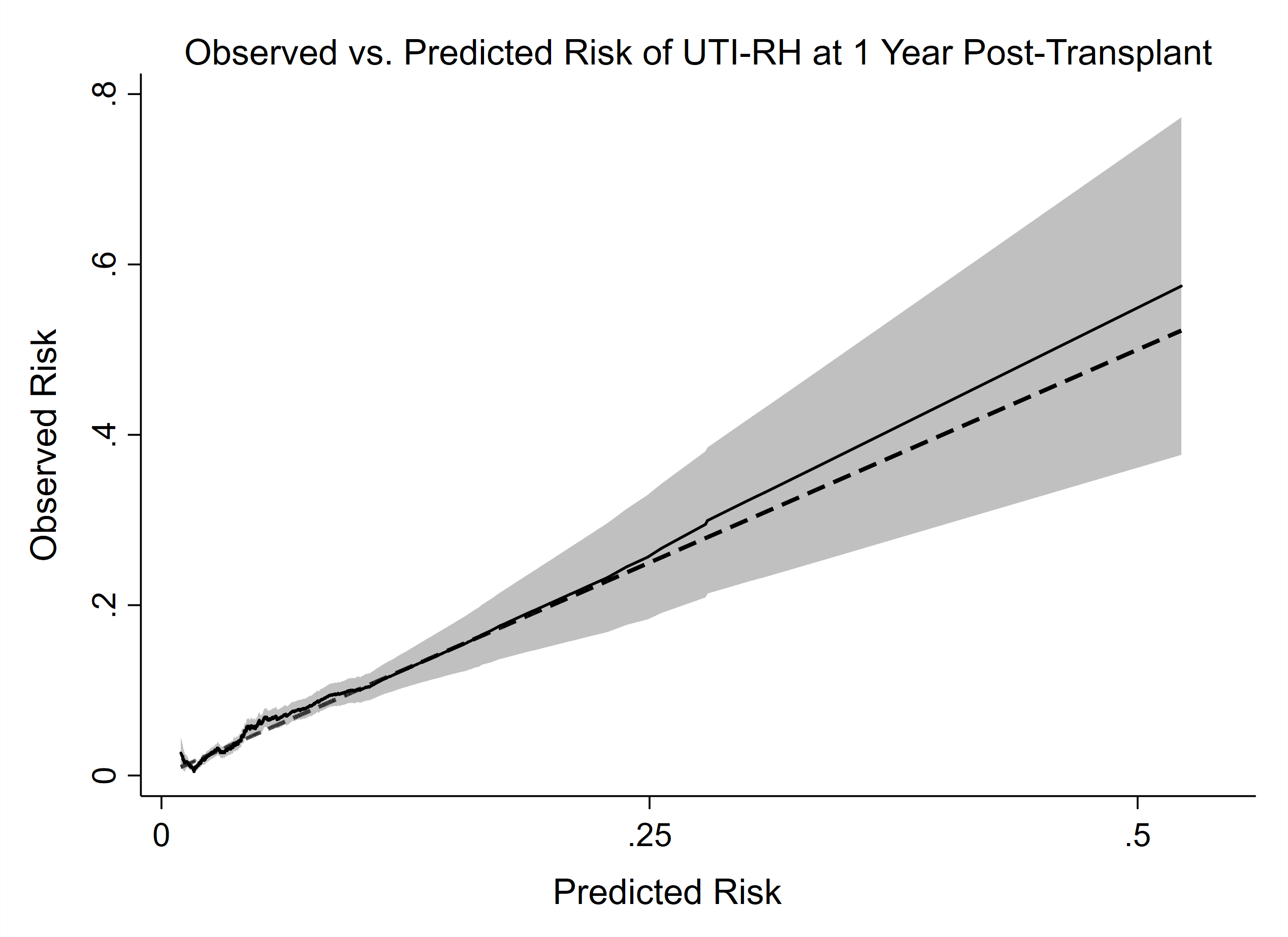Predicting Urinary Tract Infections Requiring Hospitalization in Living Donor Kidney Transplant Recipients
A. Dinh, T. Copeland, D. Adey, E. Ku
UCSF, San Francisco, CA
Meeting: 2022 American Transplant Congress
Abstract number: 549
Keywords: Infection, Kidney transplantation, Prediction models
Topic: Clinical Science » Infection Disease » 25 - Kidney Infectious Non-Polyoma & Non-Viral Hepatitis
Session Information
Session Name: Kidney Transplant Infections
Session Type: Rapid Fire Oral Abstract
Date: Tuesday, June 7, 2022
Session Time: 5:30pm-7:00pm
 Presentation Time: 6:20pm-6:30pm
Presentation Time: 6:20pm-6:30pm
Location: Hynes Ballroom B
*Purpose: Urinary tract infections (UTI) requiring hospitalization are common after kidney transplantation and are associated with increased risk of graft failure. Identifying patients at high risk for UTI-related hospitalizations (UTI-RH) for the consideration of antibiotic prophylaxis could decrease the risk of UTI-RH and any associated loss of kidney function. Our objective was to develop and validate a prediction model for UTI-RH in the first year after kidney transplantation using data from the United States Renal Data System (USRDS).
*Methods: We included adult kidney transplant recipients (KTRs) with Medicare who received a first living donor kidney transplant between 2007-2017 according to the USRDS. We included 2/3 of the cohort (N=21,826) for development of the prediction model and 1/3 (N=11,039) for validation of the risk discrimination provided by the model. We used Fine-Gray models to perform stepwise regression with backwards elimination of variables with p-value >0.10 for model variable selection. The primary outcome was a UTI-RH within one year of transplantation. We considered graft failure or death as competing risks. Candidate predictors we considered for development of the model included previously identified risk factors for UTIs in the general population and risk factors for infections in KTRs. C-statistics were used to determine model discrimination and calibration plots were used to graphically assess model calibration.
*Results: In the derivation cohort, 778 of 21,826 (3.6%) KTRs had a UTI-RH and 830 (3.8%) experienced graft failure or died within the first year of transplantation. In stepwise regression analysis, sex, race, number of UTI’s in the year prior to transplant, dialysis vintage, preemptive transplant, presence of diabetes, coronary artery disease, and attributed cause of kidney disease were retained as predictors of UTI-RH during backwards selection. In the validation cohort, 379 of 11,039 (3.4%) KTRs had a UTI-RH and 382 (3.5%) had graft failure or died. Using the validation cohort, the model C-statistic was 0.70 (95% confidence interval: 0.68-0.73). Calibration plots showed overall agreement between observed and predicted risk, but models tended to underestimate risk when the observed risk was >25% (Figure).
*Conclusions: Using readily available clinical data, we developed a prediction tool that can be used to determine the risk of a UTI-RH within one year of transplantation in living donor transplant recipients. Application of this model in clinical practice may help inform peri-transplant care and inform the use of prophylactic antibiotics and choice of immunosuppression regimens.
To cite this abstract in AMA style:
Dinh A, Copeland T, Adey D, Ku E. Predicting Urinary Tract Infections Requiring Hospitalization in Living Donor Kidney Transplant Recipients [abstract]. Am J Transplant. 2022; 22 (suppl 3). https://atcmeetingabstracts.com/abstract/predicting-urinary-tract-infections-requiring-hospitalization-in-living-donor-kidney-transplant-recipients/. Accessed December 23, 2025.« Back to 2022 American Transplant Congress

